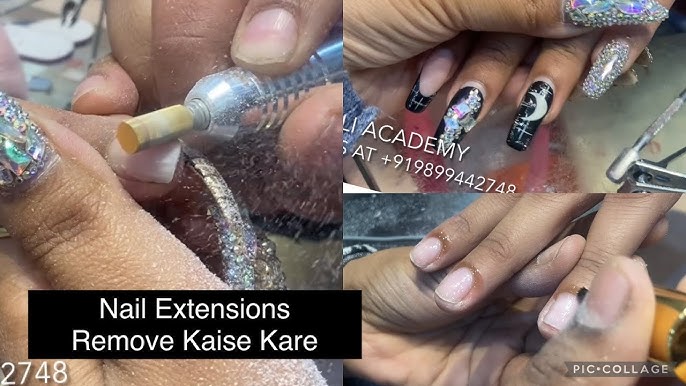A Complete Guide to Removing Extensions
Hair extensions have changed the beauty industry, providing people the opportunity to play with volume, color and length without having to commit permanently. Whether you worked with seamless tape-ins, fabulous keratin bonds, or versatile clip-ins, extensions can elevate your confidence and style. But getting extensions installed correctly is only half the battle; you also need to know how to remove them in the correct way, as improper removal can lead to breakage, tangling, and damage to your natural strands. This is precisely why it is so vital to be educated on and pay careful attention to the removal of your extensions in order to keep your hair healthy and preserve the integrity of your strands.
Understanding Hair Extensions
Hair extensions can be transformational. They can allow those with thinner hair to add volume, they can produce transformational hairstyles for one-off special events, and they allow trendy businesses the opportunity to produce fun hairstyles for their social media channels and fashion blogs without the 3-6 month wait for hair to grow. The types of hair extensions that exist—tape-in, sew-in, bonded, micro ring, halo, or clip-in—offer choices based on the hair type, lifestyle, and style choices.
While we praise the application of hair extensions, the actual removal often goes little acknowledged. Many people think that removal is the easy part of the process and don't see that removal takes special care. The reality is that no matter what type of extension method is used, extensions have to be carefully removed or it can create issues with the client's hair long-term.
Risks of Improper Removal
There are various things that can go wrong when an extensions is remove incorrectly, especially if done at home or with improper tools:
Hair breakage: Whenever you tug or pull on natural hair, you run the risk of breaking any delicate natural strands.
Scalp irritation: Using harsh chemicals, as well as any forceful technique, can lead to inflammation on the scalp.
Tangled roots: If extensions were left on longer than suggested, or taken out in a hurry, very extensive matting at the roots can occur.
Loss of hair: The most severe result of improper removal is taking natural hair out with your extension.
Split ends: Excessive friction or stress at the point of connection usually weaken the ends and eventually split.
By having professional extensions removed, you will reduce almost all of these risks and be assured your own hair will remain in healthy and beautiful condition.Risks of Improper Removal
There are various things that can go wrong when an extensions is remove incorrectly, especially if done at home or with improper tools:
Hair breakage: Whenever you tug or pull on natural hair, you run the risk of breaking any delicate natural strands.
Scalp irritation: Using harsh chemicals, as well as any forceful technique, can lead to inflammation on the scalp.
Tangled roots: If extensions were left on longer than suggested, or taken out in a hurry, very extensive matting at the roots can occur.
Loss of hair: The most severe result of improper removal is taking natural hair out with your extension.
Split ends: Excessive friction or stress at the point of connection usually weaken the ends and eventually split.
By having professional extensions removed, you will reduce almost all of these risks and be assured your own hair will remain in healthy and beautiful condition.
Hair extensions have changed the beauty industry, providing people the opportunity to play with volume, color and length without having to commit permanently. Whether you worked with seamless tape-ins, fabulous keratin bonds, or versatile clip-ins, extensions can elevate your confidence and style. But getting extensions installed correctly is only half the battle; you also need to know how to remove them in the correct way, as improper removal can lead to breakage, tangling, and damage to your natural strands. This is precisely why it is so vital to be educated on and pay careful attention to the removal of your extensions in order to keep your hair healthy and preserve the integrity of your strands.
Keratin Bonded Extensions
Keratin bonded extensions are heated and applied using keratin glue at the root. To remove them you use a bond remover to break down the keratin and then you gently crack and slide off the bonds from the hair. You always want to treat the hair afterwards to add back moisture and balance.
Sew-In (Weave) Extensions
Sew-ins involve braiding the natural hair and sewing the extensions into the braids. When stylists take out a sew-in, they slowly remove the thread with scissors or a seam ripper. They then take down the cornrows, and massage the scalp for circulation.
Micro Ring or Micro Bead Extensions
Micro ring or micro bead extensions are the tiniest of beads that clamp the natural hair. To take them out, the stylists open the beads with a pliers and hit slide it down. Because they are metal, the scalps can get damaged if the stylists are not careful and do it wrong.
Excited for a New Beginning?
Whether you have extensions you want to remove for a while or you're just ready for a change, don't forget that how they are removed is just as important as how they were put in. Gentle and professional removal of extensions is essential to Extension removal in london maintain strong, healthy hair, and you can still enjoy the full benefits of extensions without interruption.
Invest in your hair - it's the only crown you never take off.





Comments